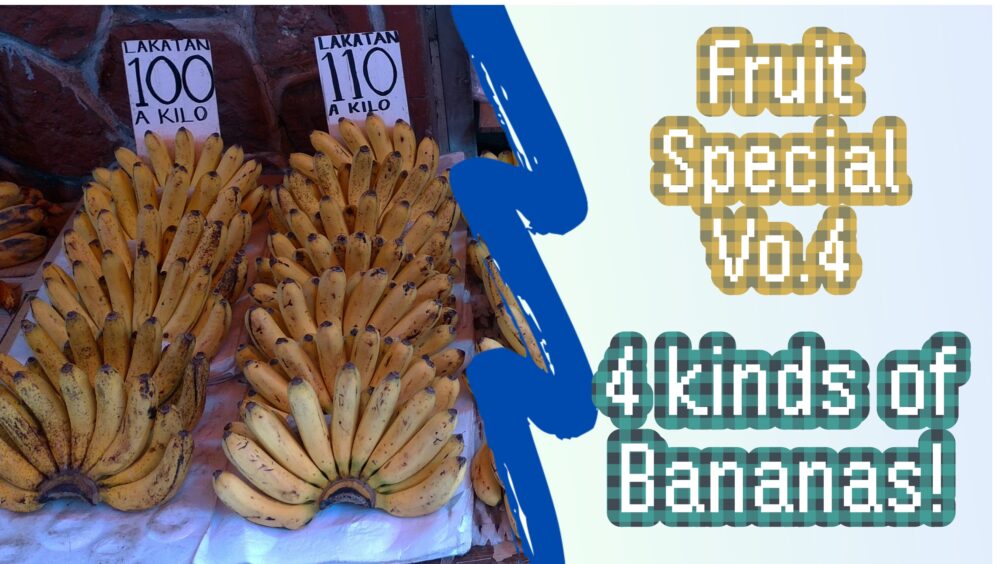Day 86 (82 days left) of my temporary language study abroad program in Baguio, Philippines.
The Philippines is all about bananas. Bananas are the Philippines. Such an image is already well established in Japan, isn’t it? If you have never paid attention to where they come from, please take a look at them at the supermarket. The share should be Philippines, Philippines, Philippines…sometimes Vietnam and Ecuador.
Bananas are cheap and nutritious in Japan under high prices and inflation, and are great for breakfast and snacks, but we have investigated what they are like there. This time, we compared four types of bananas and ranked them in terms of taste, price, etc. Before ranking them, we would like to tell you about the market.
Banana sales area at a city market
At the market, each bunch of bananas is sold carefully. Personally, I had an image of piles and piles of bananas overflowing, but this was not the case. Prices are set in detail according to size and ripeness, so that you can shop according to your preferences.

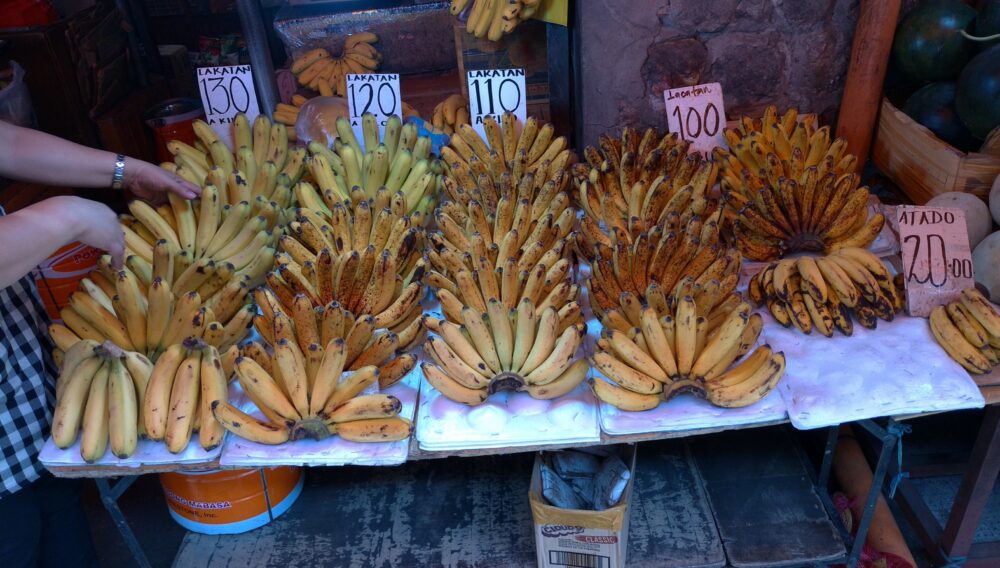
It is also surprising that the range of pricing is quite large. The prices listed here are per kilogram, so the prices vary depending on the size, but they range from 20 pesos to 130 pesos, which is quite a wide range.
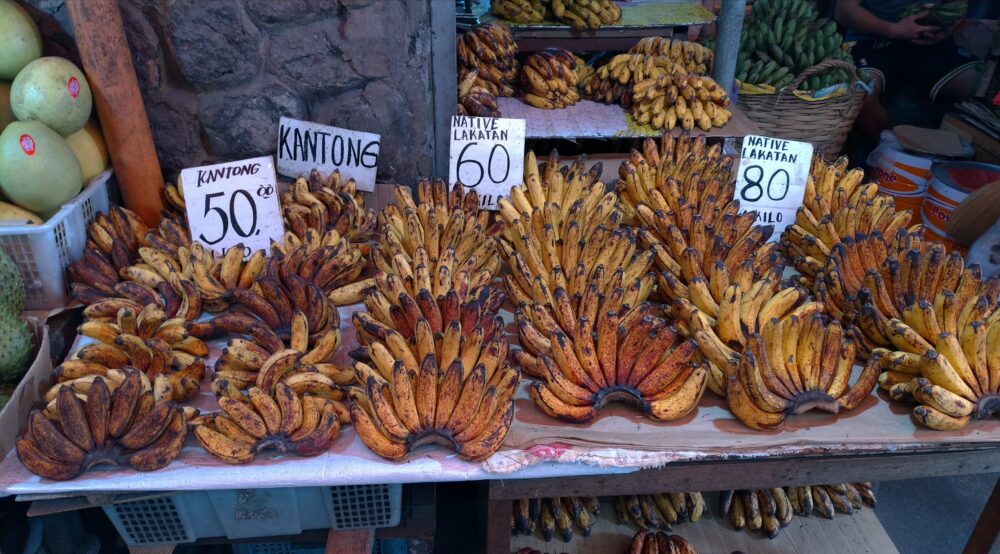
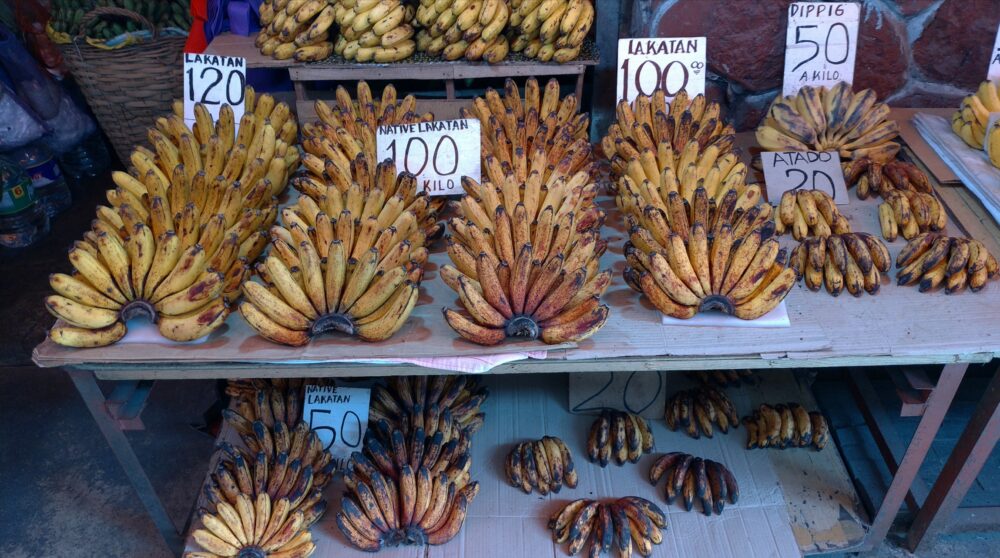
By default, they are sold in bunches of 10 or so, so you may wonder if you will be able to eat that many, but don’t worry. Also, the color of the pesos may seem a bit dark, but this is nothing to worry about. But don’t worry, it’s not that bad. The reason will be introduced in the ranking.
4th:SABA BANANA 30 peso
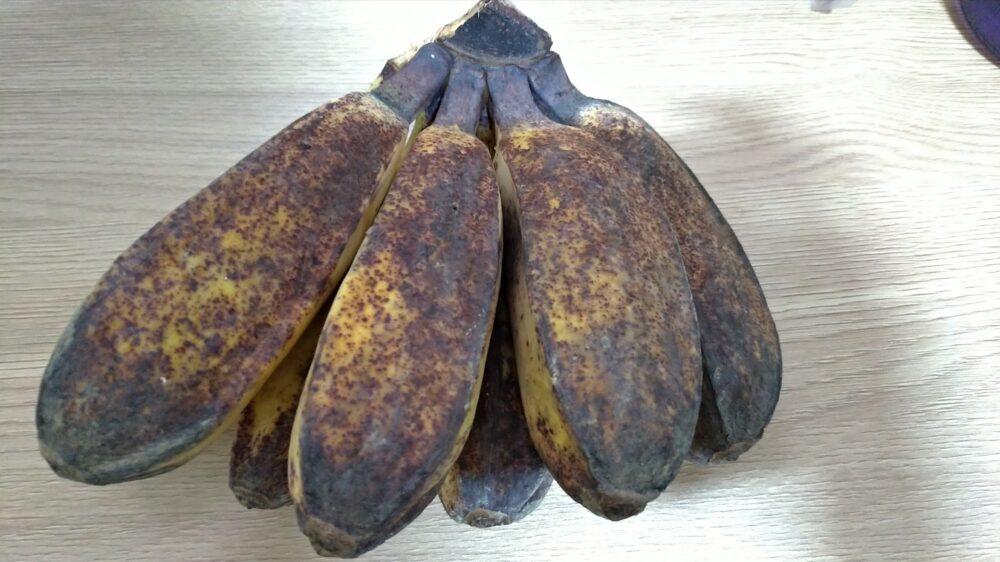
This banana is characterized by its thick and short form. At a quick glance, it may look dark and overripe, but the inside is moderately hard and yellow as you can imagine. This is why I said earlier that there is no need to worry about the longevity of the bananas, and this is why the color is just right.
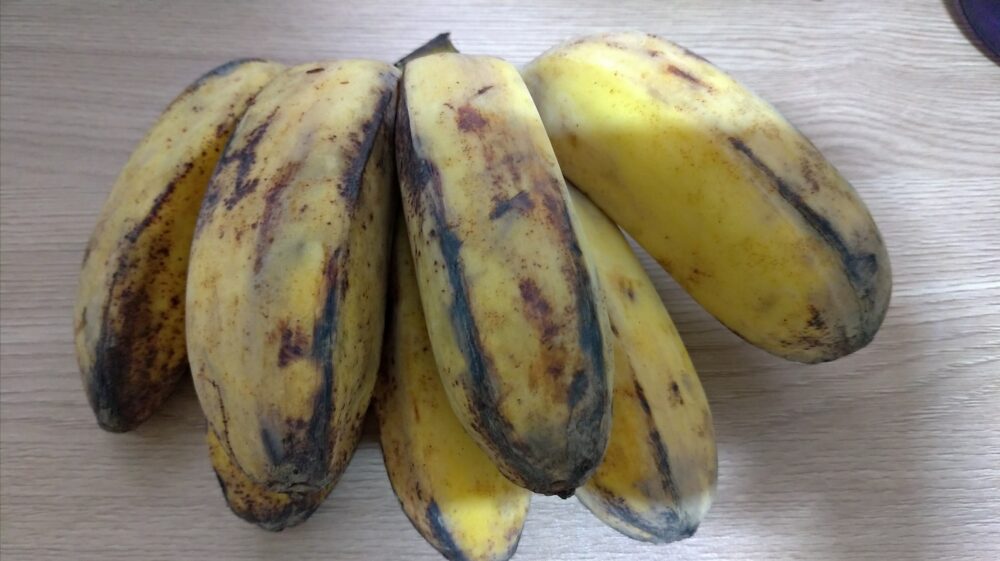
The taste is nice with moderate sweetness, but the center of the banana is a bit scabby and uncomfortable. In Japan, this mackerel banana is sold in green color for cooking. In that case, it is said to be handled like a potato, and it may be a variety that does not ripen easily due to its thickness.
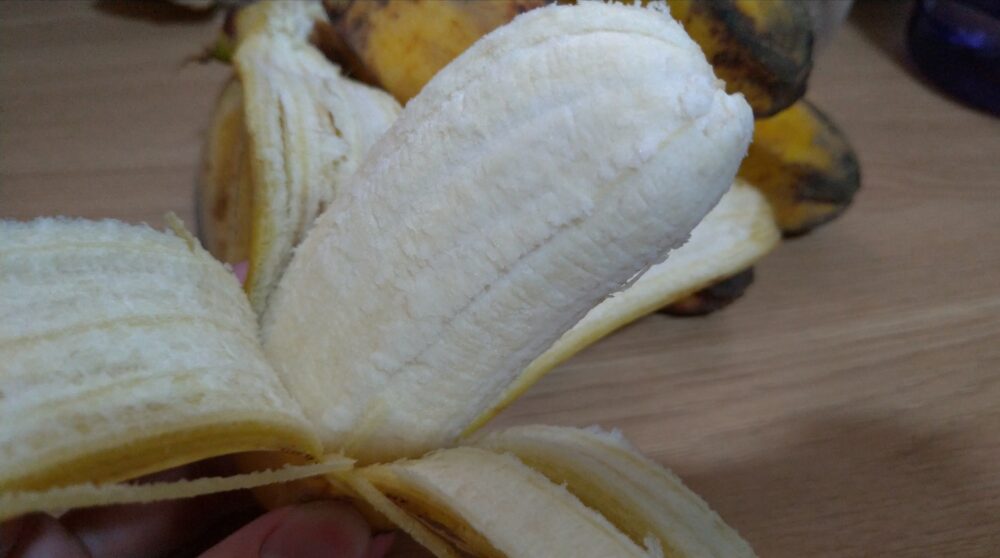
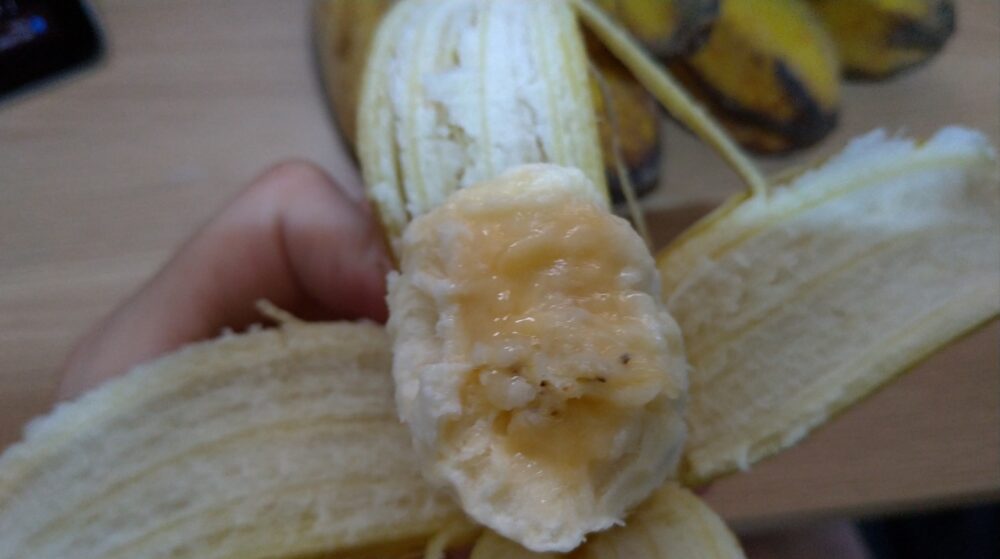
The price is 50 pesos for a kilogram, and this size costs about 30 pesos, which is quite reasonable, but the taste is not as important as the price, which is why it is ranked 4th.
3rd:LAKATAN BANANA 90 peso
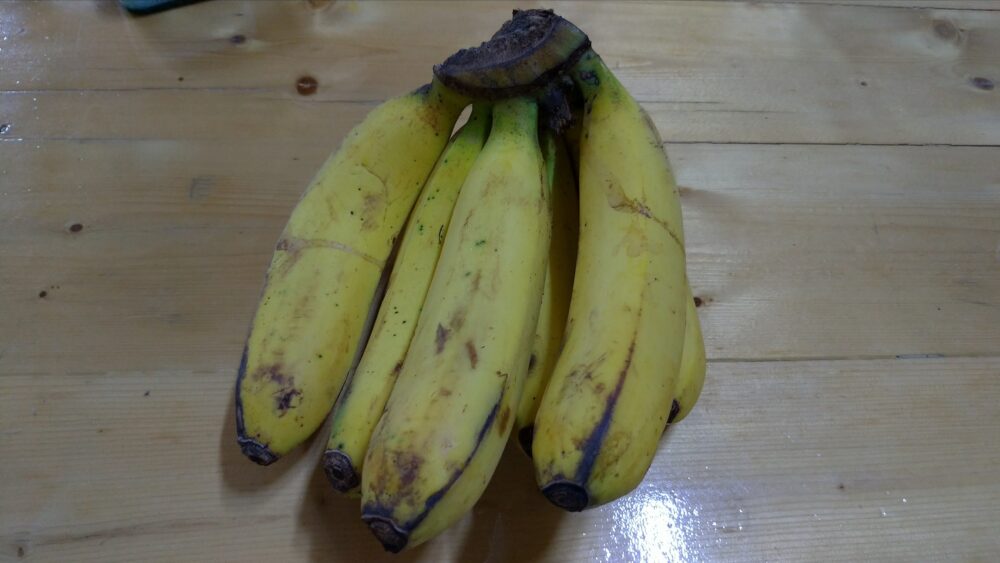
Next is LAKATAN BANANA. I should mention first that this was the most expensive banana among all the bananas I bought this time. At 90 pesos for a banana of this size, it is almost the same as the ones we buy in Japan. It has a familiar shape with the yellow color and curved shape that we imagine.

The taste, however, is quite good for the price. Not only are they sweet, but their texture is chunky, unlike cheaper bananas. I think there are bananas in Japan that you can buy for 100 yen or 200 yen, and this one is closer to the flavor of the latter.
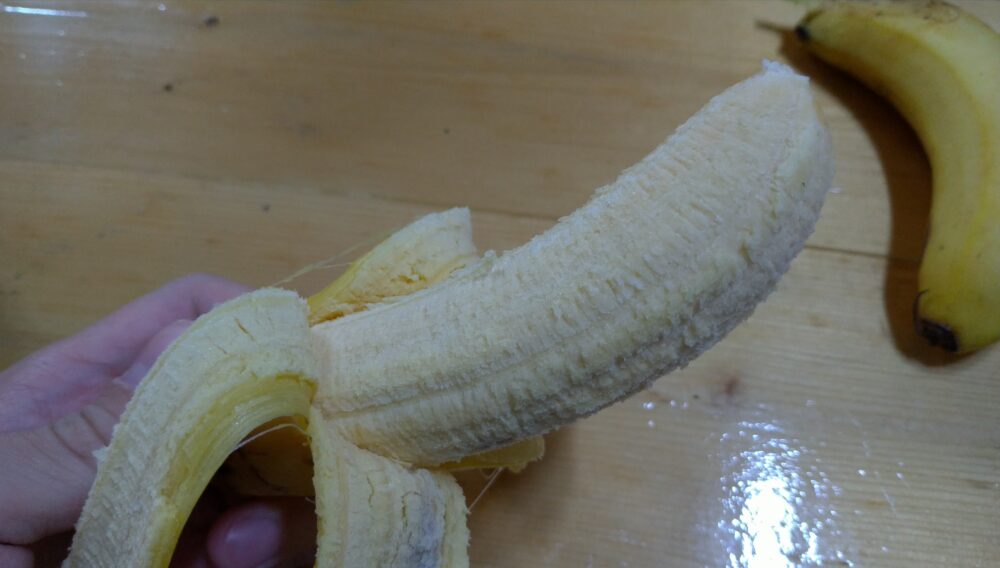
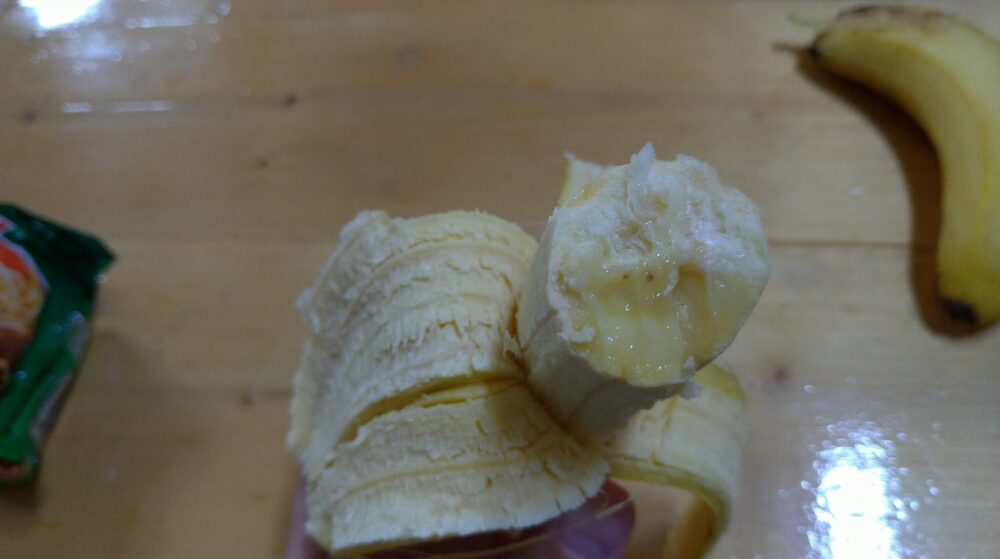
The taste was definitely good, but 1 kg costs around 100 pesos. Considering its cosmetic value, it was not suitable for everyday use, and thus it came in third place.
2nd:NATIVE LAKATAN BANANA 60 peso
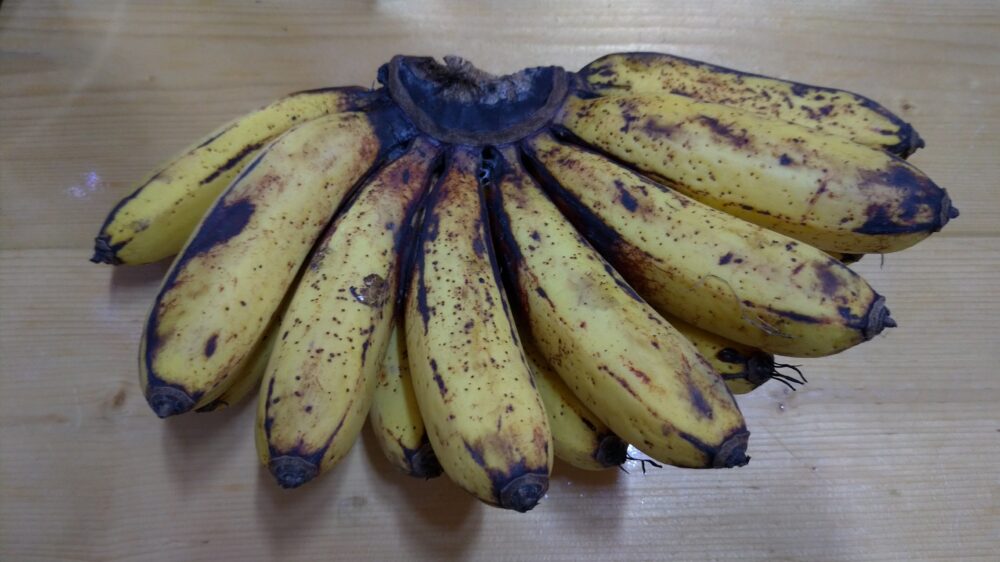
These are also LAKATAN bananas, but they are much smaller in size. Eating three of these will finally give you the satisfaction of eating one banana of the normal image. These are also quite dark and look like they are ripening, but they are not damaged.

The taste is delicious, as it bears the same LAKATAN name, and since it is labeled NATIVE, this is probably the original one, but it is inevitably different from our image of bananas, isn’t it? Unfortunately, because they are small, they don’t feel chunky, but you can eat them without getting tired of them.

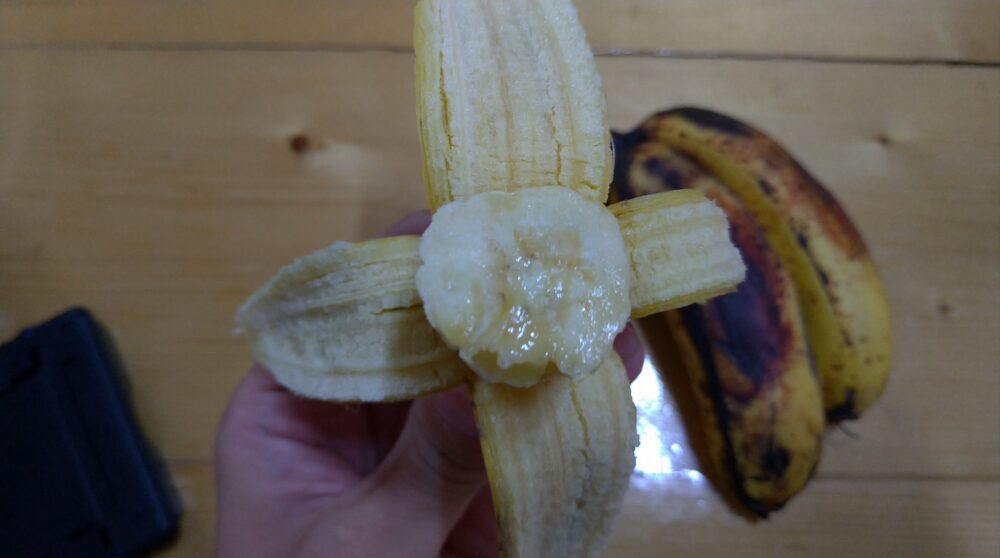
The taste is fine, and the price is 50 pesos for 1 kg, which is a fair level, so it is ranked second.
1st:TUMOK BANANA 14 peso(約37円)
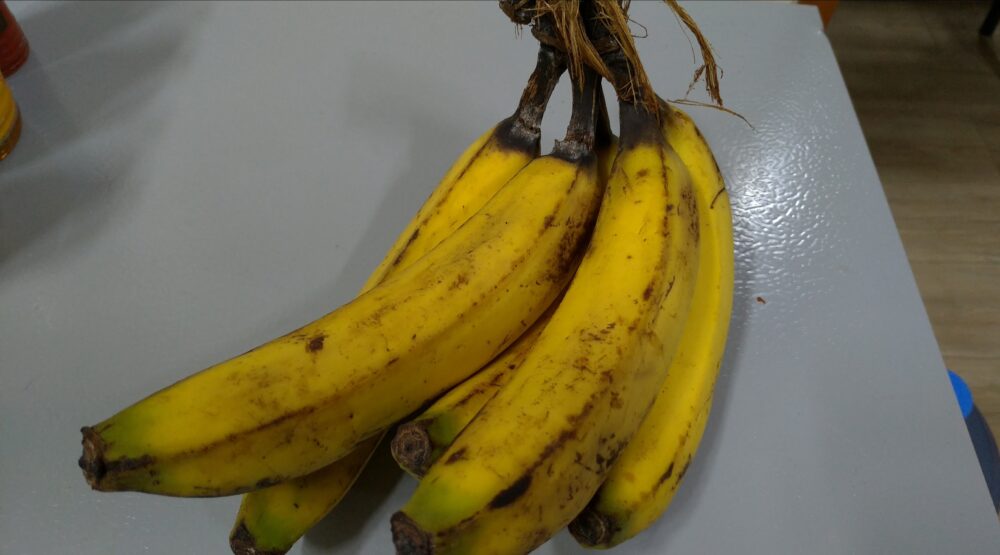
It is no exaggeration to say that I wrote this article to introduce this banana. The price is surprisingly low: 14 pesos (about 37 yen).
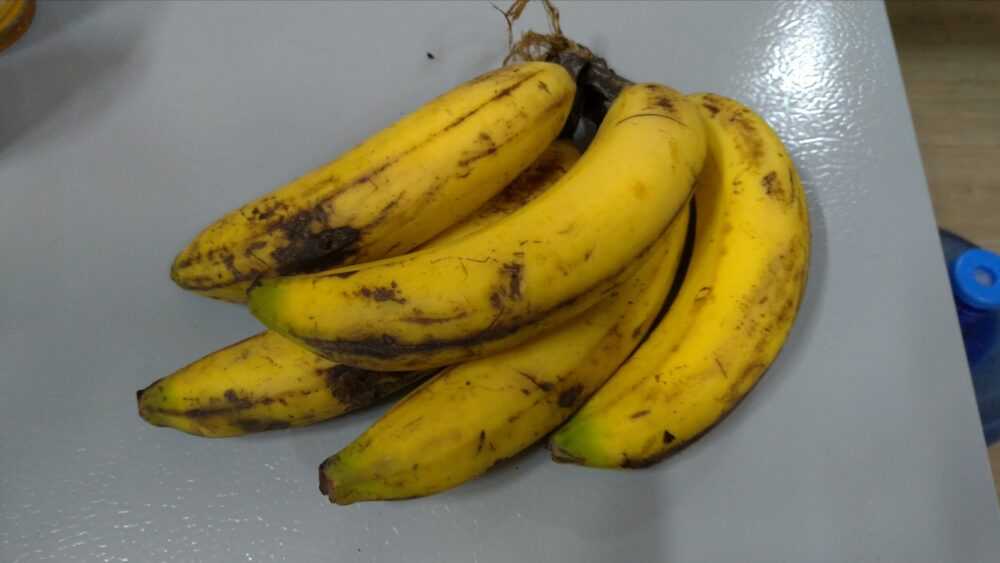
The reason for the low price is that this store specializes in these bananas. They change their pricing based on the ripeness of the bananas, which is why I was able to buy them when they were at their lowest price. This banana is unique in that it has a whisker like thing on the top of the connecting part.
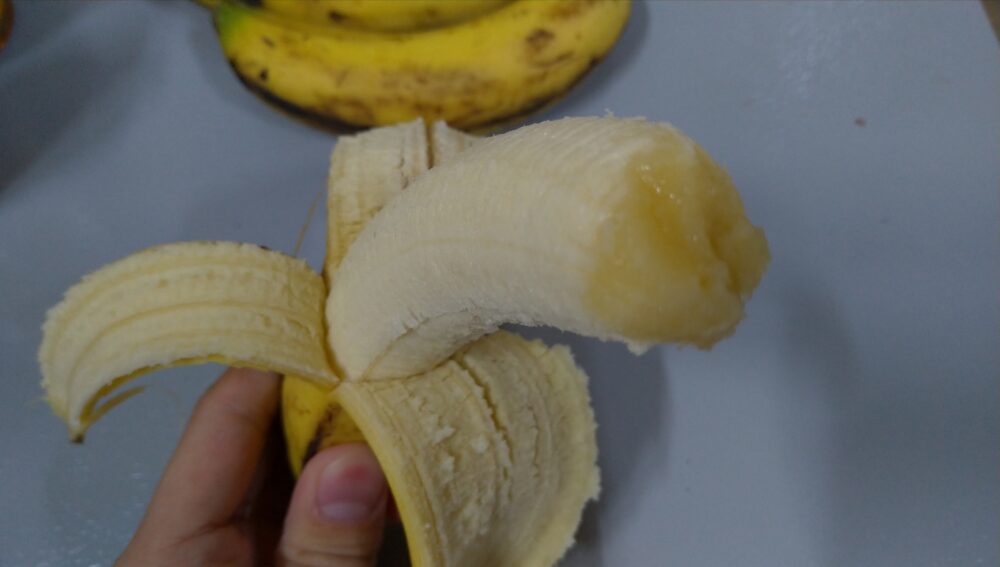
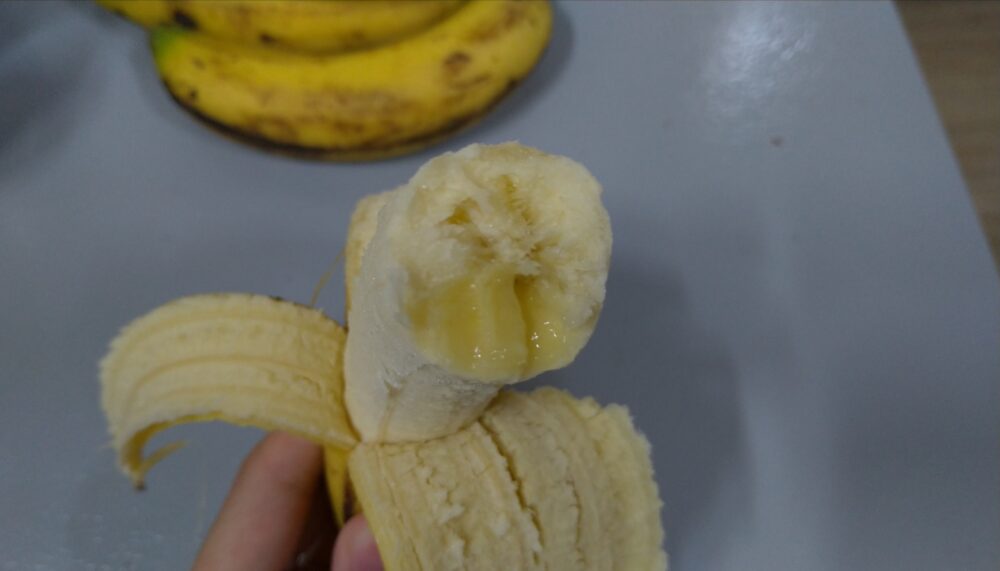
The taste and texture are average, nothing special, but nothing bad either. If the taste is not bad, and the cost is not too high, there is no shortage of reasons to give it the No. 1 position. This is a product that only those who know that even if Philippine bananas are black, the inside is okay can buy without hesitation.
Summary
In this article, I introduced bananas for breakfast and snacks. Inevitably, the Japanese image of black on the outside makes you think that the inside is soft and crushed, but that is not true. I did not encounter any bad quality ones.
There are many other types of bananas in the Philippines. I think it will be hard to find one that surpasses the TUMOK BANANA that took first place this time, but if I come across another interesting one, I will introduce it to you again!

